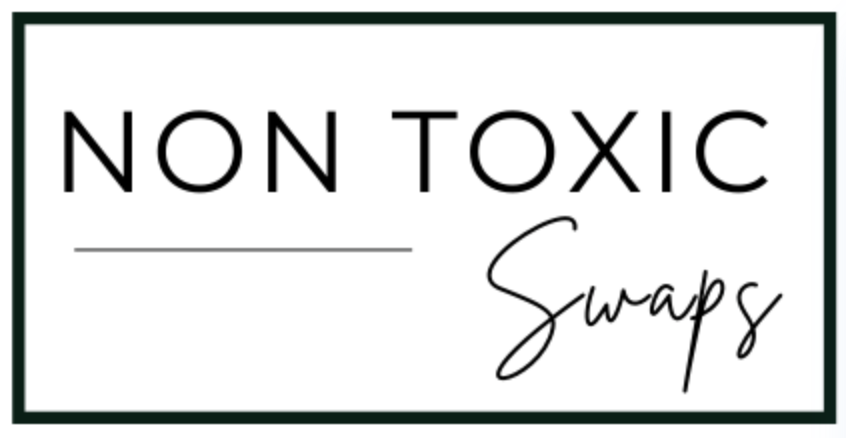Last Updated on March 21, 2025 by NonToxicSwaps
Non toxic baby lotion helps eliminate toxic ingredients from your baby’s lotion. Check out these safer options to switch to!

Affiliate disclosure: As an Amazon Associate, we may earn commissions from qualifying purchases from Amazon.
Baby lotions are intended to help moisturize baby’s skin and give off the ‘perfect baby scent’. Unfortunately, many baby lotions are made with concerning ingredients that can have a cumulative health effects.
Ingredients to Avoid in Baby Lotion
- Fragrance/Parfum: umbrella term including hundreds of toxins, including hormone disrupting phthalates, as well as skin irritants and allergens. Chemicals that are hidden behind this term can be carcinogenic, respiratory irritants, endocrine disruptors, reproductive toxins, neurotoxins, and more (PMID: 35669814)
- Parabens: preservatives linked to endocrine disruption (PMID: 29596967), known to be carcinogenic due to endocrine disruption (PMID: 36746253) Parabens may be listed as methylparaben, ethylparaben, propylparaben, butylparaben, isobutylparaben, isopropylparaben, and benzylparaben.
- Ethoxylated ingredients (PEGs, PPGs, polysorbates, ceteareth, phenoxyethanol): ethoxylation process produces ethylene oxide, a carcinogen and developmental toxin (PubChem CID: 6354) and 1,4-dioxane, a suspected carcinogen (PubChem CID: 31275)
- Phenoxyethanol: deemed generally safe at a 1% concentration, however it’s production process, ethoxylation, can potentially contaminate phenoxyethanol with 1,4-dioxane and ethylene oxide (see above for ethoxylated ingredient description) (PubChem CID: 31236)
- Polyquaterniums: (aka “quats”) group of polymers that may release formaldehyde and produce nitrosamines, both of which are known carcinogens (PubChem CID: 6433396)
- Dyes: can be carcinogenic, genotoxic and offer no benefit to the product other than color (example: Red 40, Blue 1, Yellow 5) (PMID: 23026007)
- Phthalates: preservative linked to reproductive & developmental toxicity, potentially linked to ADD and learning disabilities (PMID: 24267794) potential carcinogen & endocrine disruptor (PubChem CID: 3026)
- Petroleum/Petrolatum: carcinogen and reproductive toxin (PubChem CID: 481187790)
- Propylene glycol: penetration enhancer (PMID 31786711), bioaccumulative, can impact the nervous system (PMID: 25762872)
Check out more Non Toxic Swaps recommendations in the guides below:
NON TOXIC PERSONAL CARE GUIDES
- Toothpaste
- Hand Lotion
- Deodorant
- Men's Deodorant
- Body Lotion
- Body Wash
- Bar Soap
- Non Toxic Valentines’ Day Self Care Guide
Hair Care
Skin Care
NON TOXIC HOME GUIDES
NON TOXIC MAKEUP GUIDES
NON TOXIC BABY GUIDES
- Baby Laundry Detergent
- Baby Wash
- Baby Sunscreen
- Baby Diapers
- Baby Wipes
- Baby Lotion
- Baby Safe Paint for Cribs
- Eczema Cream for Babies & Kids




